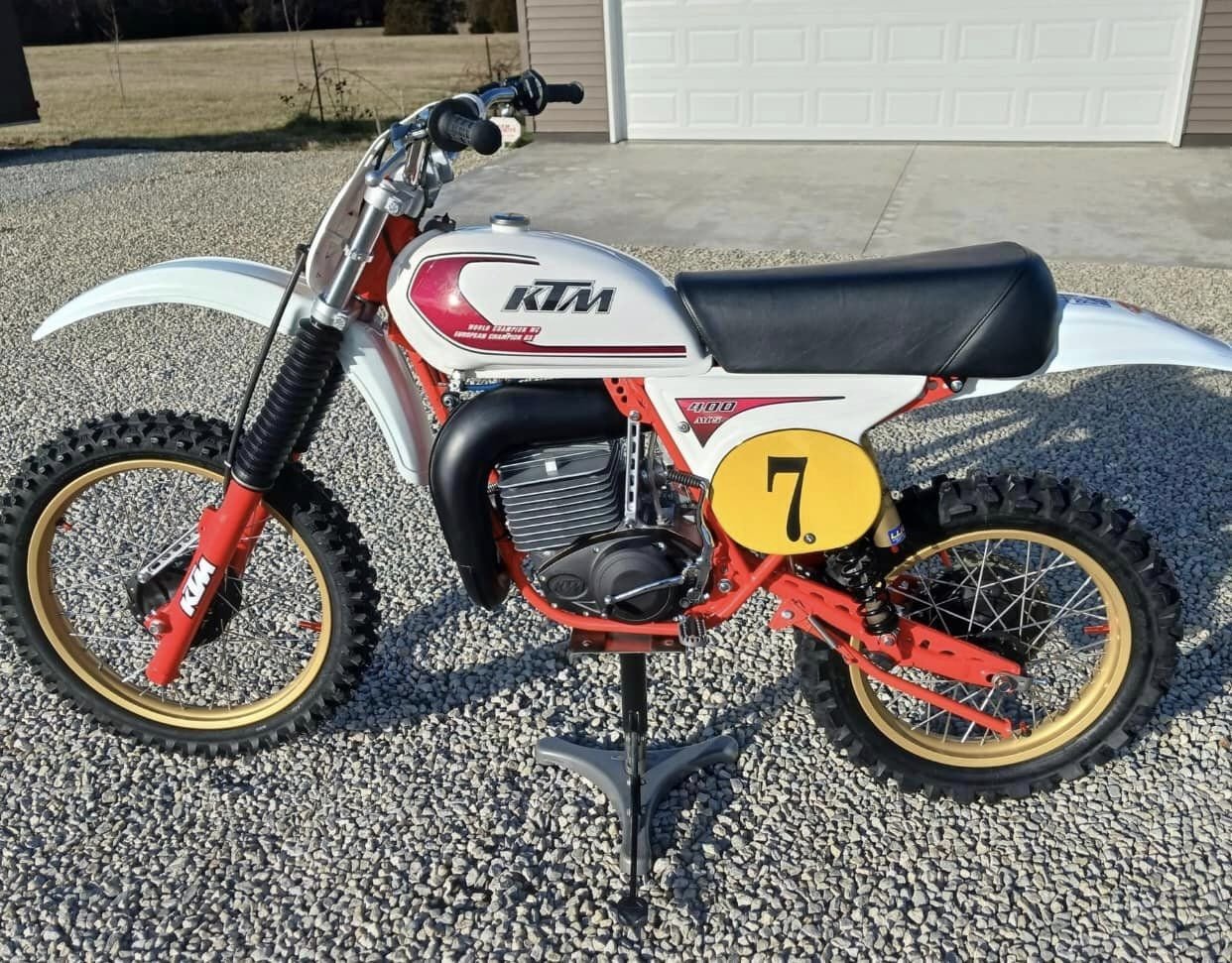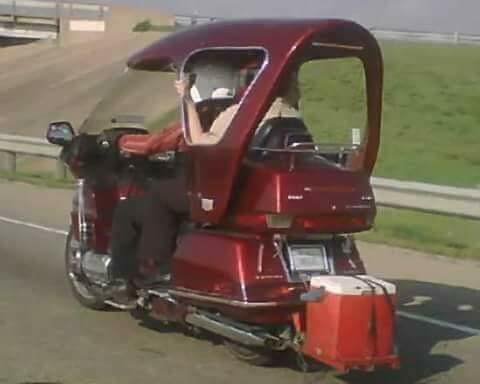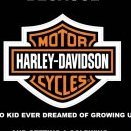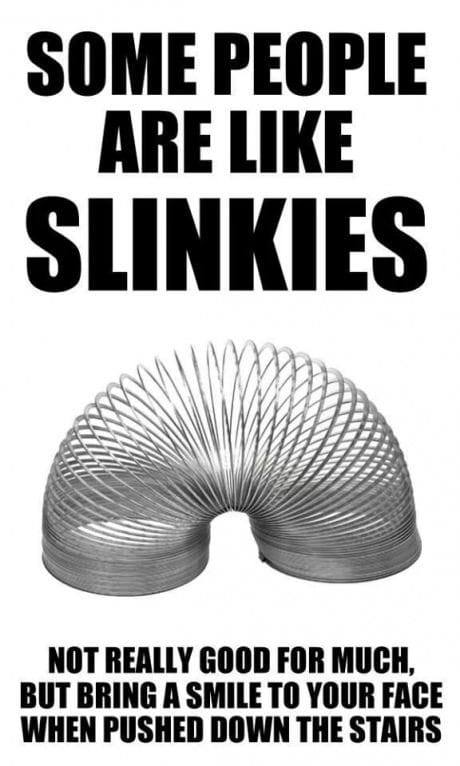All Activity
- Today
-
- Yesterday
-
Professor Wankstain's science thread
Otto von Jizzmark replied to Otto von Jizzmark's topic in GENERAL CHAT
Being 'objective' doesn't enter into it - it's a straightforward distinction between understanding the physics of radioactive decay and not understanding the physics of radioactive decay. Furthermore, I would argue that there is no comparison to be made between us when it comes to our objectivity. I couldn't care less whether radiometric dating 'works' or not, any more than I could care less whether evolution 'works' or not: I don't believe in them because I need to, but because the evidence for both is overwhelming. You, on the other hand, have a very strong vested interest in discrediting them because they fatally undermine Young Earth Creationism. Now whatever my personal views on wider religious belief may be, they pale into insignificance compared to the shear, thoroughgoing asininity of the corner of it that you have chosen to inhabit. For the low price of the complete surrender of your critical faculties you have elected to take refuge in a world of idiotic bliss, clinging to infantile views that other creationists regard as embarrassing fringe lunacy that is so easily debunked that it undermines the whole credibility of the Christian message. I have said before that it is perfectly possible to have Christian faith without needing to resort to this sort of rank idiocy. Perhaps it is time you put away childish things. -
I think we know what Pete is looking at.
-
You are still in that corner.
-
Well it’s clear that it is you that is showing wilful ignorance here. It is clear that your need to be “right” outweighs your ability to be objective. You stick to your pseudo science and obtuse statements, I’m sure some people will be fooled into thinking you are clever and that will have to suffice for you.
-
Professor Wankstain's science thread
Otto von Jizzmark replied to Otto von Jizzmark's topic in GENERAL CHAT
PS: Regarding your earlier statement that I had backed myself into a corner and couldn't see it, I think it's probably late enough now that if you wanted to delete that laughing gif no-one will notice. -
Professor Wankstain's science thread
Otto von Jizzmark replied to Otto von Jizzmark's topic in GENERAL CHAT
At no point did I say that the bomb effect has any effect on argon. There are many types of radiometric dating, and more than just C14 has been affected by nuclear fallout. If you want to hold an intelligent discussion then you have got to learn to respond to what has been said, not to what you think has been said. If you hand a scientist a rock from 1986 and ask them to date it you will get a ridiculous result. If you hand a scientist a rock, tell them it's from 1986 and ask them to date it, they'll tell you it's pointless because you'll get a ridiculous result. That does not invalidate radiometric dating for the purpose of dating rocks that are millions of years old. Is a satellite good at measuring the distance between London and New York? Yes. Is it good at measuring the thickness of human hair? No. Does that mean that satellites are no good at measuring big distances? Clearly not. I'll admit that might not be the neatest metaphor, but you'll appreciate that I'm not accustomed to having to explain this stuff in such noddy terms - not even to my kids. -
The Zongshen ZS150 B is a retro-styled, 150cc Grom competitor. (Zongshen/)Whether you look back to the original Honda Monkey of 1961, or the success of the Grom over the last decade, there has long been a demand for affordable two-wheelers that make fun their top priority. Now China’s manufacturers are catching on, and hot on the heels of the retro-styled CFMoto Papio CL and SS (both available in the US now) its rivals at Zongshen are preparing their own versions of the idea. The company has filed Chinese type-approval documents for a pair of 149cc air-cooled singles that each carry the name ZS150 and “Zonsen” branding—a name that Zongshen is pivoting toward on its bikes as they’re increasingly offered outside China. However, there’s a prominent, cartoonish illustration of a panda on each bike’s tank badge, suggesting they might get a more appealing title when they’re launched into the market. In the US, a selection of Zongshen’s existing models—up to and including the Norton-engined, 650cc RX6 twin—are offered under the CSC Motorcycles name, opening the door for these new machines to come to these shores if it makes financial sense. Related: The Chinese Connection This version of the ZS150 looks more like the Honda Monkey or CFMoto Pappio CL. (Zongshen/)The type-approval documents include all the main specifications for the two models. Like the CFMoto Papio CL and SS, one is a trail-style machine while the other is a caricature of a retro sportbike, but under the skin they’re identical. Their single-cylinder engines have a 57mm bore, matching that of the Papio, but where the CFMoto has a 49.4mm stroke the Zongshen bikes have a throw of around 58.4mm to reach a 149cc total capacity. The extra 13cc over the 126cc CFMoto machines helps the Zongshens to a peak of 10.5 hp, a fraction more than the 9.4 hp of the Papio. They’re a little heavier than the CFMoto machines though, with the trail-style model coming in at 264 pounds and the racer version weighing 267 pounds. By comparison the two Papio models each weigh 251 pounds ready to ride. Like the CFMotos, the Zongshen ZS150s each use 12-inch wheels wrapped in 120/70 rubber at the front and 130/70 at the rear. Suspension is by upside-down forks up front and monoshocks at the rear, again aligning with the CFMotos, and the brakes have discs at each end, with standard ABS. Related: Mini Bikes Honda’s Monkey was instantly a hit when it was reintroduced in 2018. (Honda /)When it comes to appearance, the naked version of the ZS150 takes its inspiration from machines like Honda’s Monkey and Gorilla, giving a more ‘60s or ‘70s vibe than the 1980s-inspired Papio CL, but there are modern touches including the distinctive headlight design that features an open hoop of LED running lights above a tiny main light unit. The faired version, carrying the word “Vintage” on its fairing, actually looks less old-fashioned. The addition of side panels and a single-seat tail unit, plus lower, narrower bars with bar-end mirrors, makes for an intriguing style that has a hint of steampunk-style retrofuturism about it. The CFMoto Pappio SS is already for sale in the US. (CFMoto/)Both bikes are illustrated with a few optional extras including enclosed disc wheels as an alternative to the standard wire-spoked alloys, while the trail version is also shown with a choice of rear treatments, with either a flat-track-style number board or a more rugged-looking grab rail at the back. It’s clear the bikes are ready for imminent launch, though there will probably be a delay between hitting the market in China and any plans for exporting them to other markets. Source
-
Indian Motorcycle has renewed its Scout lineup with five models built around a new frame and engine. The Scout Bobber (shown) comes into the new model year as the most popular Scout in recent years. (Garth Milan/)There is nothing simple about the 2025 Indian Scout lineup except for the way Indian describes the bikes. They are cruisers. Classic, American-made V-twins that are just as much about heritage and body lines as they are cornering clearance and technology. You can have your performance (and the new bikes do), but Indian refuses to have that be the Scouts’ personality. That laid-back approach has worked well for Indian since the Scout was unveiled in 2014, quickly turning the model into the company’s most successful platform. In some parts of the world, the Scout is the most successful mid-displacement cruiser, and in all parts, it’s described as the most important bike to Indian Motorcycle’s future. This is an entry into the brand. Where you go from here, and if you stay with Indian, depends largely on your experience with the bike. Needless to say, Indian aims to please. There’s an Indian Scout for just about any rider type or style. (Tim Sutton/)Of course, part of pleasing the masses comes down to having something for the masses, and for 2025 Indian is doing that by bringing five Scout models to showroom floors, including the simple but elegant Scout Classic; the slammed Scout Bobber; the light touring-ready Super Scout; the Sport Scout; and its most aggressive middleweight cruiser yet, the 101 Scout. That’s a lot of Scout, but a bulk of the hardware is shared across models meaning Indian isn’t trying to confuse you so much as it’s looking to give you options through stylistic upgrades. This is like walking into In-N-Out Burger and deciding what to get—you’re going to get a burger, but how you order that burger is entirely dependent on your tastes. Related: 2025 Indian Scout First Look Indian’s new SpeedPlus 1250 V-twin produces 105 or 111 hp depending on the model. Indian says all models can be updated at the dealer to achieve the 111 hp of 101 Scout. (Tim Sutton/)2025 Scout Platform Updates Indian’s liquid-cooled SpeedPlus 1250 V-twin engine is first on the list of “components” shared across the lineup. Measuring in at an even 1,250cc (versus 1,133cc), it makes a claimed 111 hp in 101 Scout trim and 105 hp when bolted to every other model thanks to different ECU tuning, with all versions making a claimed 82 lb.-ft. of torque. That’s a 5 to 11 hp bump depending on model and an added 10 lb.-ft. of torque. The engine is new from the inside out, with big changes to the top end (including new pistons and larger valves) as well as a lighter crank, the latter helping Indian shave nearly 10 pounds (!) from the engine. A slip/assist clutch was added, plus Indian spent a lot of time refining the inside of the engine to eliminate gear whine customers complained about on earlier-generation Scouts. Different headlight treatments for different models. All models get an LED headlight. (Indian Motorcycle/)The airbox is redesigned, but that’s less obvious than the new radiator, which is 20 percent smaller and squeezed into a new frame that has a steel tube front section versus cast aluminum. Steel tube is significant because of the lighter appearance, but also because it opens the door to more custom work. Speaking of custom, Indian went to great lengths to give the Scout a polished look. Electronics and necessary hardware are packaged neatly as possible, with most of the hardware tucked behind the frame’s cast aluminum midsection. Out back you’ll find a platform-wide subframe that allows accessories to be shared across models, as well as a new exhaust, which gives more space for accessory saddlebags compared to the more cumbersome dual-muffler exhaust. Indian’s 2025 Scouts are restyled but still easily recognizable. The tank is moderately bigger, but only because Indian has reshaped it to accommodatet the new airbox. (Tim Sutton/)Similarities fade from there. The Scout Classic, Scout Bobber, and Super Scout roll on 16-inch wheels while the more aggressive Scouts have a larger, 19-inch front wheel. All bikes have a nonadjustable fork with 4.7 inches of travel and dual shocks with 3.0 inches of travel, except for the “slammed” Bobber, which has nonadjustable shocks with just 2.0 inches of travel, and the 101 Scout, which has a fully adjustable inverted fork with 5.9 inches of travel and fully adjustable shocks. The 101 Scout also gets Brembo front stoppers and dual 320mm brake discs, versus a single 298mm disc. If that sounds more expensive than most of the other options, that’s because it is. The 101 Scout comes in at $16,999, which is identical to Harley-Davidson’s Sportster S and mostly on par with the luggage-equipped Super Scout ($16,499–$16,999). The rest of the lineup is priced between $12,999 and $16,699. Related: 2022 Harley-Davidson Nightster vs. Honda Rebel 1100 DCT vs. Indian Scout Rogue All models besides the 101 Scout use a 298mm single front disc (shown). The 101 gets dual 320mm discs with Brembo calipers. Notice also the nonadjustable fork that’s standard on all but the 101 Scout. (Tim Sutton/)The wide price range is thanks mostly to Indian offering every bike but the 101 and Super Scout in different trims. Standard models get an analog gauge, LED headlight, and ABS; Limited versions have ride modes, traction control, cruise control, and a USB port; while Limited +Tech gets you all of the aforementioned features plus a 4-inch touchscreen display, keyless push-button ignition, and Ride Command, which opens the door to turn-by-turn navigation and more. Paint is different on nearly every model and even varies based on trim level, as do the finishes, with bikes like the Classic getting more chrome than bikes like the Bobber, Sport, and 101. We hope you’re good with making decisions, because there are a lot of them to make here, and each will dramatically change your experience. Two gauge clusters are available depending on the trim level: a touchscreen TFT with the Limited +Tech or a standard analog/LCD combo on Standard and Limited versions. (Indian Motorcycle/)The Big Picture There is a general theme across the board, and a similar sensation between each of the bikes. Preproduction firmware delayed start-up initiation on the TFT-equipped Limited +Tech bikes prepped for our ride from San Francisco to Santa Cruz (and back), but fit and finish is otherwise great. Controls are solid, wires are nicely concealed, and paint is pristine, hold for a small, unpainted surface below the fuel cap. The new exhaust doesn’t do much to wake you up on a cold morning, but the bike settles into a nice low hum, and in either trim the engine gives your eyes something nice to look at—a stark contrast from the Harley-Davidson’s Revolution Max 1250T engine that leaves something to be desired from a visual perspective. The 2025 Indian Super Scout gets saddlebags and a passenger seat as standard. The pull tap makes it easy to get into the bags. (Tim Sutton/)It’s been nearly a year since we’ve ridden the Rev Max 1250T-equipped Sportster S, and even longer since throwing a leg over the Revolution Max 975T-equipped Nightster, so we’ll refrain from more comparisons. What we can say is that the SpeedPlus 1250 feels more flexible than the previous Scout engine, with enough midrange and top-end to not feel like you have to shift as often. Lucky, because Indian hasn’t updated the transmission, and with everything else getting a touch of modernity, this box feels clunky and outdated. Pulling away from a stop is more difficult than it should be too, thanks to a combination of new slip/assist clutch that lacks feel at the friction zone and the lighter crank, which helps the engine spin up faster and adds to the overall character, but doesn’t do much for you around town. We made friends with the clutch after a few miles, and you will too in the first long ride, but those aren’t small concerns given that the Scout is built mostly for around-town riding and newer riders. Seamless is always better here. The Scout Bobber has 1 inch less rear suspension travel at just 2 inches. | Photo: Tim Sutton (Tim Sutton/)The rest of the engine gives you exactly what you need from a cruiser platform. There’s enough meat to have fun, but not so much top-end performance that you’ll wish the engine was stuffed in something other than a bike with 2 to 3 inches of travel. Power is tractable, vibes only really start to pick up at around 80 mph in top gear, and the powerplant flexible enough for a wide variety of riding, making it an ideal centerpiece for the Scout, in any version. “The heart of an American cruiser is the engine,” says Ola Stenegärd, director of industrial design for Indian Motorcycle. And in this case, Indian has a strong one. Speaking of versions and different conditions, after two full days of riding—the first through downtown San Francisco and the (much) more scenic coastal roads skirting the Northern California coast, and the second up tight two-lane roads heading inland from Santa Cruz, we challenged ourselves to rank each of the new Scouts in order of least favorite to favorite, and the order might surprise you. Scout Classic 2025 Indian Scout Classic; $13,999–$16,699 (Garth Milan/)While the Scout Classic is at the bottom of that list, its ranking stems mostly from a lack of defining features compared to the other models rather than any major flaws. If you appreciate classic, swoopy fenders and an abundance of chrome finishes, then this bike checks the right boxes. Those fenders aren’t a departure from anything we’ve seen on the Scout before though, and with its dearth of other defining features, the Classic feels almost out of place in every situation. There’s no wind protection for the highway and no slammed suspension for that cool look around town. It exists, as it should, but only in the shadows of the rest. Scout Bobber 2025 Indian Scout Bobber; $12,999–$15,699 (Garth Milan/)The Scout Bobber is the most affordable entry into the lineup and also the most popular Scout model so far, but to love the Bobber and its 2 inches of rear suspension travel is to commit to a serious amount of quality time with your chiropractor. The stock suspension on Scout models (fully adjustable 101 Scout suspension not included) already struggles with bump absorption, and losing an inch out back doesn’t do you any favors. The Bobber’s ergonomics are more aggressive as well, thanks to a low, flat handlebar that has you almost stretched out over the tank. All this adds up to a cool look when cruising through town and makes the Bobber a great platform for a custom build, but the sacrifices are a bit excessive for us, and it’s exhausting having to be on the lookout for every pothole or manhole cover dotting torn-up, downtown streets. Sport Scout 2025 Indian Sport Scout; $13,499–$15,699 (Garth Milan/)Related: 2023 Harley-Davidson Sportster S Review The Sport Scout is a lot like the Bobber in that it comes off as a great canvas for customization. A replacement for the Scout Rogue, it is not nearly as sporty as the Sport name suggests, but there’s a sense of potential in these bones. Handling knocks are not specific to the Sport either, as all of the nonadjustable Scout suspension lacks bump compliance and will cause you to deflect off sharp-edged hits in a very uncomfortable way once the pace picks up. The single brake disc gets the job done, but moving up to the 101 Scout highlights a lack of feel and power compared to a full-featured, two-disc setup. Pairing Indian’s accessory, 10-inch handlebar risers (stock are 6 inches) with the moto-style handlebar that comes standard on Sport and 101 models gives you an idea of how aggressive the bike can look with minor modifications, and it’s that custom-bike potential that draws us to the Sport over any other feature. That, and the added inch of rear suspension travel over the Bobber. Super Scout 2025 Indian Super Scout; $16,499–$16,999 (Garth Milan/)The Super Scout is the sleeper of the group, the only real downside being the higher price of entry. Look past that and you’ll find one of the most versatile bikes of the 2025 lineup, with enough wind protection, comfort, and luggage for longer trips. Versatility comes in the form of the quick-release windshield, which mounts to the fork legs and can be removed in just seconds. Sidebags are not waterproof or lockable but offer decent storage and have an easy pull system for releasing the lid. Removing either of these gives you most (but not all) of a Scout Classic. Worth mentioning here is that the seat isn’t generously sized on any Scout, and we almost always got off the bikes wishing for a bit more support at the leading edge of the saddle. That is especially true on a bike that you’ll do more touring miles on. The ergonomics are otherwise quite comfortable for taller riders. Forward controls come standard on all models but feel more like relaxed mid-controls, meaning the reach is not too far, giving taller riders enough legroom to not feel cramped. Indian will offer mid-controls as an accessory too. 101 Scout 2025 Indian 101 Scout; $16,999 (Garth Milan/)While we hoped the most expensive Scout wouldn’t also be our favorite, the reality is that the 101′s upgrades completely change the ride experience. Brakes are more responsive, suspension eats up rough pavement, and the 111 hp engine tune gives the bike a sharpness that suggests there’s more to the tune than just a 6-hp difference. The $17,000 price tag is $4,000 higher than that of the $13,000 standard-spec Bobber that gets you into the lineup, but the 101 doesn’t have to be an entry-level machine that you’ll move on from; this is a bike you’ll actually want to hold onto as your skills and wants as a rider grow. There’s more than enough style, performance, and character to make this a long-term commitment. It’s the Scout that you can ride fast if you want, but is equally as entertaining on a casual ride with friends. Plus, once you max out the options on the other Scouts, the prices are much closer. The downside? You can only get the 101 Scout with painted graphics rather than solid colors—-a selling point for some, but not all. The 101 Scout only comes with painted graphics. (Tim Sutton/)Final Thoughts The beauty of the 2025 Scout lineup is that you don’t have to agree with our rankings. You can (and probably will) find that one bike better suits your needs. And that’s the point: There’s something for everyone in this lineup, and enough accessories (100 total) to create the bike that works best for you. Of course, Indian has managed to do all this without completely shifting the Scout’s storyline. This is still very much a cruiser, just with a little cherry on top in the form of more horsepower and available tech. The Super Scout has a West Coast club vibe. (Tim Sutton/)Speaking of horsepower, if anything other than the 101 catches your eye, consider updating the ECU tune at your dealer if and when the opportunity arises. Pricing is not confirmed, but Indian says that will be an option, and the performance leap is big enough that it’s absolutely worth doing. Also, while we only tested bikes with the Limited +Tech trim levels and loved the touchscreen display, we tinkered with a Limited model with analog gauge, and found it much less endearing, meaning the Limited +Tech package might be the best way to go, unless you really do love keeping it simple. And, well, technically, that’s what the Scout is still all about. The Super Scout is a classic and simple touring cruiser. (Tim Sutton/) Adjusting ride modes is straightforward on the touchscreen dash. (Tim Sutton/)2025 Indian Scout Classic Specs MSRP: $13,999–$16,699 Engine: Liquid-cooled 60-degree V-twin Displacement: 1,250cc Bore x Stroke: 104.0 x 73.6mm Compression Ratio: 12.5:1 Transmission/Final Drive: 6-speed/belt Claimed Horsepower: 105 hp @ 7,250 rpm Claimed Torque: 82.0 lb.-ft. @ 6,300 rpm Fuel System: Closed-loop fuel injection w/ 60mm throttle bodies Clutch: Wet, multiplate Engine Management/Ignition: Electronic Frame: Steel tube w/ cast aluminum sections Front Suspension: 41mm telescopic fork; 4.7 in. travel Rear Suspension: Dual outboard shocks; 3.0 in. travel Front Brake: 2-piston caliper, 298mm disc Rear Brake: 1-piston caliper, 298mm disc Wheels, Front/Rear: Wire; 16 x 3.5 in. / 16 x 3.5 in. Tires, Front/Rear: Pirelli Night Dragon; 130/90B-16 / 150/80B-16 Rake/Trail: 29.0°/4.8 in. Wheelbase: 61.5 in. Ground Clearance: 4.4 in. Seat Height: 25.7 in. Fuel Capacity: 3.4 gal. Claimed Wet Weight) 555 lb. Contact: indianmotorcycle.com 2025 Indian Scout Bobber Specs MSRP: $12,999–$15,699 Engine: Liquid-cooled 60-degree V-twin Displacement: 1,250cc Bore x Stroke: 104.0 x 73.6mm Compression Ratio: 12.5:1 Transmission/Final Drive: 6-speed/belt Claimed Horsepower: 105 hp @ 7,250 rpm Claimed Torque: 82.0 lb.-ft. @ 6,300 rpm Fuel System: Closed-loop fuel injection w/ 60mm throttle bodies Clutch: Wet, multiplate Engine Management/Ignition: Electronic Frame: Steel tube w/ cast aluminum sections Front Suspension: 41mm telescopic fork; 4.7 in. travel Rear Suspension: Dual outboard shocks; 2.0 in. travel Front Brake: 2-piston caliper, 298mm disc Rear Brake: 1-piston caliper, 298mm disc Wheels, Front/Rear: Cast 8-spoke; 16 x 3.5 in. / 16 x 3.5 in. Tires, Front/Rear: Pirelli MT 60 RS; 130/90B-16 / 150/80B-16 Rake/Trail: 29.4°/4.9 in. Wheelbase: 61.5 in. Ground Clearance: 4.3 in. Seat Height: 25.6 in. Fuel Capacity: 3.4 gal. Claimed Wet Weight: 542 lb. 2025 Indian Super Scout Specs MSRP: $16,499–$16,999 Engine: Liquid-cooled 60-degree V-twin Displacement: 1,250cc Bore x Stroke: 104.0 x 73.6mm Compression Ratio: 12.5:1 Transmission/Final Drive: 6-speed/belt Claimed Horsepower: 105 hp @ 7,250 rpm Claimed Torque: 82.0 lb.-ft. @ 6,300 rpm Fuel System: Closed-loop fuel injection w/ 60mm throttle bodies Clutch: Wet, multiplate Engine Management/Ignition: Electronic Frame: Steel tube w/ cast aluminum sections Front Suspension: 41mm telescopic fork; 4.7 in. travel Rear Suspension: Dual outboard shocks; 3.0 in. travel Front Brake: 2-piston caliper, 298mm disc Rear Brake: 1-piston caliper, 298mm disc Wheels, Front/Rear: Wire 40-spoke; 16 x 3.5 in. / 16 x 3.5 in. Tires, Front/Rear: Pirelli MT 60 RS; 130/90B-16 67H / 150/80B-16 77H Rake/Trail: 29.0°/4.8 in. Wheelbase: 61.5 in. Ground Clearance: 4.4 in. Seat Height: 25.7 in. Fuel Capacity: 3.4 gal. Claimed Wet Weight: 589 lb. 2025 Indian Sport Scout Specs MSRP: $13,499–$15,699 Engine: Liquid-cooled 60-degree V-twin Displacement: 1,250cc Bore x Stroke: 104.0 x 73.6mm Compression Ratio: 12.5:1 Transmission/Final Drive: 6-speed/belt Claimed Horsepower: 105 hp @ 7,250 rpm Claimed Torque: 82.0 lb.-ft. @ 6,300 rpm Fuel System: Closed-loop fuel injection w/ 60mm throttle bodies Clutch: Wet, multiplate Engine Management/Ignition: Electronic Frame: Steel tube w/ cast aluminum sections Front Suspension: 41mm telescopic fork; 4.7 in. travel Rear Suspension: Dual outboard shocks; 3.0 in. travel Front Brake: 2-piston caliper, 298mm disc Rear Brake: 1-piston caliper, 298mm disc Wheels, Front/Rear: Cast 8-spoke; 19 x 3.5 in. / 16 x 3.5 in. Tires, Front/Rear: Metzeler Cruisetec; 130/60B-19 / 150/80B-16 Rake/Trail: 29.0°/4.7 in. Wheelbase: 61.5 in. Ground Clearance: 4.4 in. Seat Height: 25.7 in. Fuel Capacity: 3.4 gal. Claimed Wet Weight: 548 lb. 2025 Indian 101 Scout Claimed Specs MSRP: $16,999 Engine: Liquid-cooled 60-degree V-twin Displacement: 1,250cc Bore x Stroke: 104.0 x 73.6mm Compression Ratio: 12.5:1 Transmission/Final Drive: 6-speed/belt Claimed Horsepower: 111 hp @ 7,250 rpm Claimed Torque: 82.0 lb.-ft. @ 6,300 rpm Fuel System: Closed-loop fuel injection w/ 60mm throttle bodies Clutch: Wet, multiplate Engine Management/Ignition: Electronic Frame: Steel tube w/ cast aluminum sections Front Suspension: 43mm inverted fork, fully adjustable; 5.9 in. travel Rear Suspension: Dual outboard shocks, fully adjustable; 3.0 in. travel Front Brake: Dual 4-piston calipers, 320mm discs Rear Brake: 1-piston caliper, 298mm disc Wheels, Front/Rear: Cast 5-spoke; 19 x 3.5 in. / 16 x 3.5 in. Tires, Front/Rear: Metzeler Cruisetec; 130/60B-19 / 150/80B-16 Rake/Trail: 29.0°/4.8 in. Wheelbase: 61.5 in. Ground Clearance: 4.4 in. Seat Height: 25.7 in. Fuel Capacity: 3.4 gal. Claimed Wet Weight : 549 lb. Indian Scout Bobber. (Tim Sutton/)Gearbox Helmet: Bell Eliminator Jacket: AGV Sport Chipper 130 Flannel Pant: Rev’It Jackson 2 SK Gloves: Spidi Boots: XPD X-Goodwood Source
-
The bomb effect doesn’t have any effect on Argon. Again you are missing the point of course, someone is handed a rock to date, they are not going to be told it was formed in 1986, so what happens? The try to date it making the usual assumptions and come up with 350,000 years. If you can’t see the problem with that then I can’t help you. If you are really stupid enough to state “precisely because they are known to produce wildly inaccurate results in samples of such recent geologic record” and still think that the dating of minerals is credible science then there is no hope for you. Time to toddle off to some web site or forum where like minded folk will soothe your bruised ego.
-
Professor Wankstain's science thread
Otto von Jizzmark replied to Otto von Jizzmark's topic in GENERAL CHAT
No scientist would try to date rocks from 1986 using the methods you have described, precisely because they are known to produce wildly inaccurate results in samples of such recent geologic record. Also, can you understand why the release of certain radioactive isotopes in the 1940s might make a sample formed in 1986 date as being considerably older than it was? -
Well that’s the whole point, rocks known to have been formed in 1986 have been dated as being 350,000 years old, if you can’t figure out why that would be a problem then I’m guessing you are suffering from the zzzak effect.
-
Professor Wankstain's science thread
Otto von Jizzmark replied to Otto von Jizzmark's topic in GENERAL CHAT
I'm very well aware of how C14 dating works Buckster. The point I was making is that of the main methods used to date samples of very recent geologic record (of which C14 is one but not the only one), fallout from nuclear tests and bomb detonations has caused significant problems. I'm not sure why you mention uranium-lead dating, which has an error margin of 2 million years in 2.5 billion years, so not much use for 100-year old material. Similarly, the youngest rocks I'm aware of that have been potassium-argon dated were 20,000 years old. Again, not much use for anything from the 20th Century. So I'll ask you again: what method was being used to date 100 year old rocks that gave the results that you believe disproves radiometric dating? -
Not like that where I live thankfully.
-
Baby Reindeer... netflix... true story, gorgeous bird in it... @Buckster would
-
Radioactive carbon, also known as carbon-14 exclusively isn’t even used to age minerals, it is only suitable for organic matter, therefore the bomb effect is not part of this equation, the most likely method used to date minerals is the potassium/argon method, although uranium/lead is also used. The first element is the unstable one with the latter in each case being the “stable” daughter element actually used for the dating process.
-
Its a dangerous business that micro stuff.




.thumb.jpg.b909514d0ac186649bc1cbe40b56461b.jpg)







